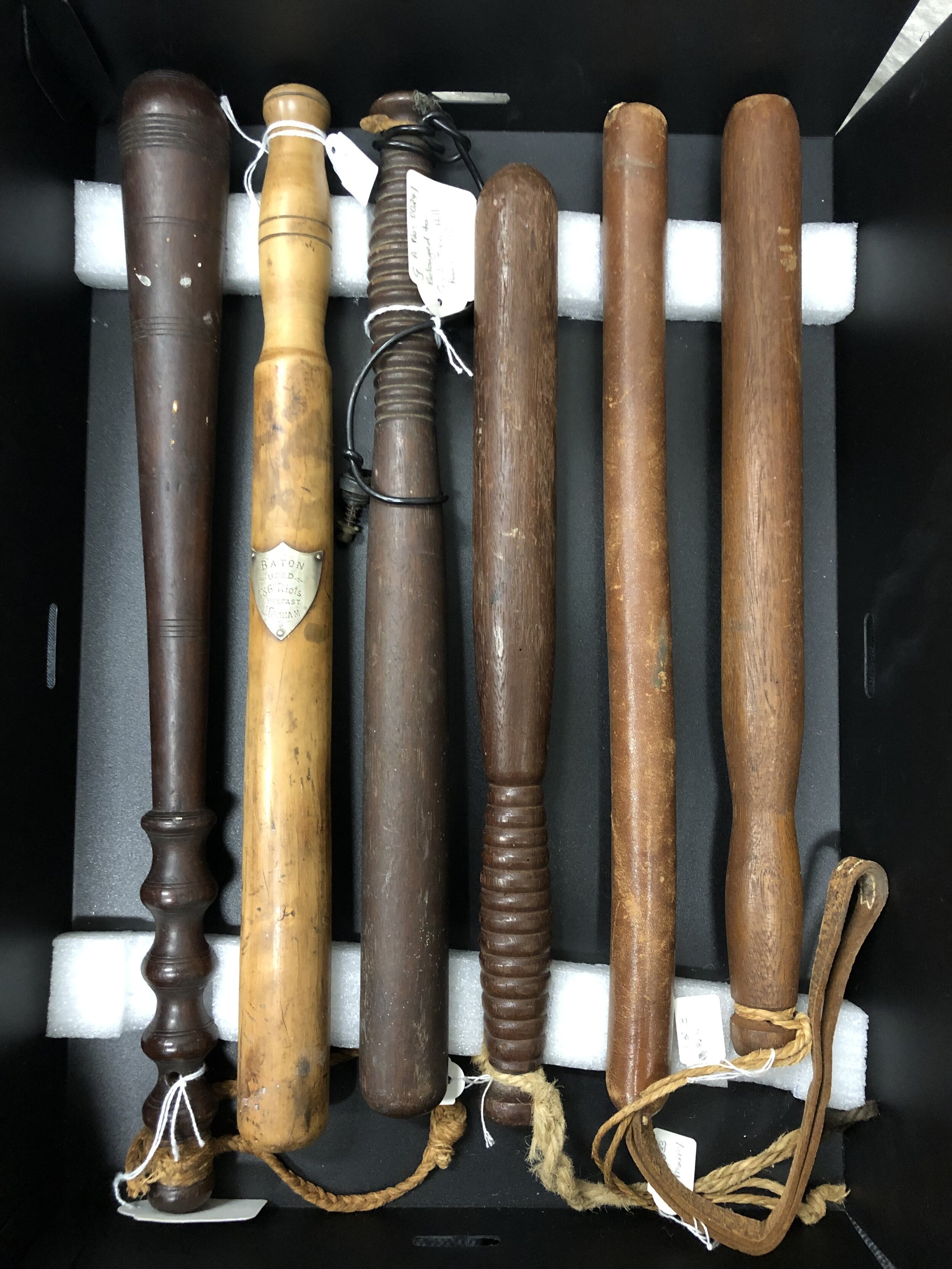Queensland Police Museum Treasures: Police Batons
This is the first entry in, hopefully, regular series showcasing the treasures held at the Queensland Police Museum, located in the Queensland Police Service Headquarters, Brisbane.
Queensland Police Museum Collection. Image: A Dukova
Division A, Moreton Bay, was the largest police establishment in Queensland. 1 Brisbane policemen, similar to the Dublin or London Metropolitan men, only carried batons on their regular beats, and no guns.
A Dukova, Queensland Police Museum
The physical requirements for entry into the force were meant to compensate for the lack of armaments. An eligible applicant must have measured a clear 5’8 inches without their boots (which I do not), have been of strong constitution, and free from any bodily complaint.2 Apart from fulfilling the physical requirement, the applicants had to possess basic literacy skills. Candidates for the Force had to be under the age of 30, unless they had previously been engaged in Police duty, in which case they may be admitted up to the age of 35 years. Stout uniformed men standing at near or over six feet in height with their batons at the ready were judged to present an imposing enough sight to discourage potential depredators without the additional aid of a pistol. Prevention of crime was the primary objective of Brisbane City Police.
In the 1880s, Queensland Police saw a significant number of Irish recruits apply to join the force. Candidates with previous service with the Irish Constabulary, urban police or any military/law enforcement agency were actively sought out for the service. The majority of the Queensland Police rank and file had Irish links, and officers displayed a strong Irish presence, principally during the earlier years of the force. The Register of Members of the Police Force, 1856–1917 showed that between 1870 and 1890 well over half of the supernumeraries listed Ireland as their country of origin. 3
Baton belonging to J Graham, used in 1886 Belfast Riots, Queensland Police Museum Collection
One of the batons in the Queensland Police Museum Collection belonged to ‘J Graham’ of the Royal Irish Constabulary. 1886 saw a series of riots in Belfast which resulted in the district being proclaimed meaning the Riot Act was read and normal civil and judicial rights and processes, such as habeas corpus, were suspended and martial law was effectively proclaimed.
Bowershill RIC barracks on the Shankill Road the day after the ‘battle’. (Welch Collection, National Museums and Galleries of Northern Ireland). Image from “Closely Akin to Actual Warfare”
In his article ‘Closely Akin to Actual Warfare’, History Ireland Issue 4 (Winter 1999) Vol 7 , an historian and an ex-RUC Mark Radford, writes:
The journalist Frankfort Moore, writing in 1914 about events he witnessed in the late nineteenth century, described the Belfast riots of 1886 as being ‘closely akin to actual warfare’. Notwithstanding his touch of hyperbole, the riots were costly in human and financial terms: thirty-two people died, hundreds of people were injured and some £90,000 worth of damage was caused. 4
It is fascinating to find this baton in the collection of the Queensland Police Museum in Brisbane today.
References
Anastasia Dukova, Crime and Policing in Dublin, Brisbane and London, c 1850-1900. PhD Thesis, Trinity College Dublin, 2012.
1 “Report of the Commissioner of Police for the Year 1885” in Queensland Votes and Proceedings of the Legislative Assembly during the Session of 1886, being the fourth Session of the ninth Parliament; with the Various Documents Connected Therewith in three Volumes, Vol. I. (Brisbane: By Authority: James C. Beal, Government Printer, William Street, 1886), p. 613.
2 Manual of Police Regulations for the Guidance of the Constabulary of Queensland. (Brisbane: James C Beal, Government Printer, William Street, 1876), p. 31.
3 Anastasia Dukova, A History of the Dublin Metropolitan Police and its Colonial Legacy (Palgrave Macmillan, 2016), pp. 150-151.
4 Mark Radford, “Closely Akin to Actual Warfare”, History Ireland Issue 4 (Winter 1999) Vol 7




